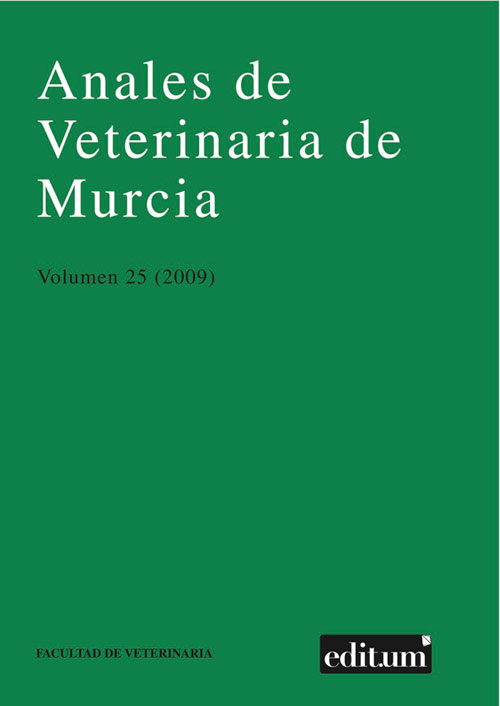Evaluación de la recombinasa reca sobre la unión espermatozoide-ADN exógeno en la transgénesis mediada por espermatozoides en la especie porcina
Abstract
Sperm mediated gene transfer (SMGT) is an interesting tool for animal transgenesis consisting on the use of sperm cells as a vector for transmitting exogenous DNA into eggs at the moment of fertilization. On the other hand, RecA, a bacterial recombinase, was shown to protect DNA from degradation by creating a protective coating during its binding to it and resulted in higher embryo survival and transgenic integration frequencies in mice produced by ICSI. The objective of this study was to investigate the capacity of transference of RecA:ssDNA complex by pig spermatozoa by measuring the sperm DNA-binding ability and viability by fl ow cytometry. Semen was recovered and centrifuged, discarding the seminal plasma. Linealized plasmid DNA was added to sperm and incubated at 16ºC (control group). In RecA group, DNA was denatured (95ºC, 5 min) and incubated with RecA on ice for 1h, then mixed with sperm. RecA group sperm signifi cantly increased DNA-binding capacity compared to control group semen after 120 min (Control: 19.68±0.73% vs. RecA: 24.69±0.70%; p<0.01). Exogenous DNA bound mainly to spermatozoa with reduced viability in all the groups of spermatozoa evaluated (Control: 19.21±0.71% vs. RecA: 24.11±0.69%; p<0.01). In consequence, only a low percentage of living spermatozoa was bound to DNA (Control: 0.47±0.09% vs. RecA: 0.58±0.09%; p=0.40). In this study we have demonstrated that the complex RecA:ssDNA bind with the pig sperm in a higher relation than sperm incubated only with the transgene, and in both cases the binding is associated mainly with nonviable cells. Therefore, the SMGT technique could combines with assisted reproductive techniques such as ICSI to obtain embryos and transgenic piglets.Downloads
Creative Commons Attribution 4.0
The works published in this journal are subject to the following terms:
1. The Publications Service of the University of Murcia (the publisher) retains the property rights (copyright) of published works, and encourages and enables the reuse of the same under the license specified in paragraph 2.
© Servicio de Publicaciones, Universidad de Murcia, 2019
2. The works are published in the online edition of the journal under a Creative Commons Attribution-NonCommercial 4.0 (legal text). You can copy, use, distribute, transmit and publicly display, provided that: i) you cite the author and the original source of publication (journal, editorial and URL of the work), ii) are not used for commercial purposes, iii ) mentions the existence and specifications of this license.

This work is licensed under a Creative Commons Attribution-NonCommercial-NoDerivatives 4.0 International License.
3. Conditions of self-archiving. Is allowed and encouraged the authors to disseminate electronically pre-print versions (version before being evaluated and sent to the journal) and / or post-print (version reviewed and accepted for publication) of their works before publication, as it encourages its earliest circulation and diffusion and thus a possible increase in its citation and scope between the academic community. RoMEO Color: Green.




